Have you ever wished your dog could talk to you? I’m sure, like millions of others, myself included, you have. Well, I have good news for you, dogs do “talk” to us, and they do it a lot. There are 2 forms of communication, verbal and non-verbal. We are constantly communicating to our dogs, whether we know it or not, through non-verbal communication (body language). Humans mainly communicate verbally. We use non-verbal communication as well, but by far our primary method of communicating is verbally. Dogs, however are just the opposite. They mainly communicate through body language. They communicate verbally through whining, growling, howling, whimpering, etc.., but their primary method is through body language.
When interpreting what a dog is saying it is a MUST to take context into account. A dog can display the same body language in 2 different situations and they may not be saying the same thing, even though it may look like they are. Context is everything when interpreting what your dog is trying to tell you. The body parts you need to pay attention to include the mouth, eyes, ears, position of the head, whether the body is stiff vs relaxed, hair along the top of the back (piloerection), and the tail. All of these must be looked at together. For example, a dog that has his ears up and forward could be curious or be in a heightened state of attention and on the verge of aggressive behavior. It depends on what the rest of the body is doing. I will start at the head and work my way back. Remember, one body part will not give you a truly accurate assessment of what your dog is saying without looking at all the parts as a whole and without considering the context in which the signals are given.
Mouth
- Generally, an open mouth/relaxed jaw indicates a relaxed dog. On the other hand, a closed mouth can indicate a heightened state of attention and possibly, but not necessarily, impending aggression.
- If your dog is panting and suddenly closes their mouth, with ears erect and forward, something has likely caught their attention and they are focusing on it. This does not mean aggression, but things can go in that direction depending on the situation.
- The mouth can also give you clues as to what the underlying motivation is when your dog is growling. Are they fearful, or are they confident? A fearful dog will trying to show all of their teeth (incisors, K-9’s, and molars) when they growl. It’s kind of analogous to a bluff in humans. They’re saying “look at all my big scary teeth,” but thinking “oh my God I hope this thing leaves me alone.” A dog that is confident will only show the incisors and K-9 teeth when growling. This is a dog that is not afraid of the situation. This is the growl of a confident dog.
- Other body parts will help you to interpret mouth position. Ears that are up and forward indicate confidence or curiosity. Ears that are down and back indicate fear, anxiety, or relaxation.
- Yawning is a sign that she is uncomfortable and/or tense (often interpreted as being tired).
Tongue
- More specifically, licking of the lips. Dogs that are uncomfortable will often lick their lips. Usually, this type of lick is a quick lick. The tongue barely comes out of the mouth and goes back in really quickly. This is a signal of submission, appeasement, or acknowledgement. For example, say you have caught your dog in the act of doing something she should not be doing, you say “NO!” to her, and she looks in your direction and gives one of those quick licks. She is saying, “Okay, I understand that you are upset, please calm down now.” If you continue to scold or punish, you will likely make them fearful of you because they are giving you submissive signals that are being ignored.
- A lick that is more pronounced is usually an indication of moderate to severe stress. With this type of lick, the tongue travels all the way back to the corner of the mouth. This is much more obvious than the quick flick.
Eyes
- It’s been said that the eyes are the windows to the soul. Well, when interpreting canine behavior, they are also a window into the mind. What you need to pay attention to is the direction of the gaze, the position of the eyelids (open wide vs squinting), and pupil size.
- Dogs that are uncomfortable will often squint and look away from whatever is causing the discomfort. This commonly happens with picture taking. Your dog may be looking at you and you see the perfect picture, but the second you raise the camera, they look away. The camera is making them uncomfortable and they are trying to tell you that.
- If their eyes are wide open and they are looking directly at something or someone, they are at attention and may be issuing a challenge or threatening someone or something. Again, this doesn’t mean aggression, but they are closer to aggression than they were just a few seconds before.
- Pupil size can indicate calmness or stress (fear, anxiety, aggression). Obviously ambient lighting affects pupil size, so lets say that there is normal room lighting. Under normal room lighting conditions, dilated (large) pupils indicate arousal or stress. Normal pupil size indicates relaxation.
- Scanning of the eyes, looking back and forth and all around, with or without panting, with the ears back, and the head held low, is another sign of stress/anxiety.
- Blinking is a sign of submission, especially if repetitive.
- In general, the larger the eyes are, the more confident/threatening the dog is. Conversely, the smaller the eyes are (squinting), the more submissive/fearful the dog is.
Ears
- A dogs ears say a lot about their state of mind. The 2 extremes of ear position are straight up and slightly forward, which indicates confidence and attention, and down and back, glued to their head, which indicates extreme fear and anxiety. What happens in between those 2 extremes is an indication of the intensity of the emotion she is feeling.
- Ears that are erect and as forward as they can be (especially if accompanied by bared teeth and a wrinkled nose) indicate that one should choose their next move carefully. This is a confident dog that will fight/bite if pushed too far.
- Ears that are erect and slightly forward indicate curious attention. Often the jaw is relaxed and open, but could be closed as well.
- Ears that are slightly pulled back and kind of splay out sideways indicate a suspicious/cautious emotion. She is not quite fearful, but she is a bit uneasy about the situation.
- Ears that are pulled most of the way back can mean several things and other parts of the body must be considered when interpreting this position. If the teeth are not visible, eyes are slightly closed or squinting, the tail is tucked, and the head is held low, often accompanied by the quick lick, this is a sign of submission or she is signaling that she is not a threat. If the tail is held high, eyes are open, and the mouth is open and relaxed, this is a friendly posture and she is likely signally playful behavior.
- Ears that are pulled all the way back and are glued to the head, accompanied by a head that is held low, a tail that is tucked all the way under, and eyes that are squinting and scanning, indicates extreme fear/submissiveness.
Tail
- A wagging tail does NOT mean a happy dog. You must look at the position of the tail and the character of the wag.
- A tail that is held straight up/slightly curved over the back of the dog indicates attention and confidence. This dog is not at all afraid of what she is seeing. Often the tail will be stiff or have a slight wag that usually only involves the tip of the tail. This is not a happy dog wag.
- A tail that is held straight back/horizontal to the ground and is stiff/not wagging is signaling attention, but is a less aggressive posture that if it were held straight up. This is a cautious position and maybe a mild challenge to a stranger.
- If the tail is held horizontal, but not stiff, it is a sign of relaxed attention.
- A tail that is held just below horizontal, but not tucked between the legs, with an occasional relaxed wag that originates from the base (near the rear end) of the tail indicates a calm/relaxed dog.
- A tail that is near the legs, but not tucked in between, with a slight wag that involves mainly the tip of the tail, indicates insecurity/slight fear/slight anxiety.
- A tail that is tucked between the legs indicates a fearful dog.
- A tail with bristled hair down it’s entire length and is held upright indicates a threat/challenge.
- A tail that is bristled just at the tip indicates stress.
- A tail that is wagging from the base, usually the butt is wagging to, indicates a happy dog.
- A tail that is stiff, and just the tip is wagging, indicates a dog that is at attention. This is the wag that is present when I hear “I can’t believe he bit me! He was wagging his tail!”
- A special note is needed here: some dogs naturally carry their tails low when relaxed (Greyhounds) and some naturally carry it high (Akitas).
Body
- A dog with stiff legs, an upright posture, with slow and/or stiff movements forward is telling you that they are very confident. This is an active aggressive signal from a confident dog that is willing to assert themselves. They are not necessarily being aggressive, but things could go that way if they are challenged.
- If hair is standing up on the shoulders and down the back, coupled with a stiff and upright body posture, watch out. This is a serious dog and you should choose your next move carefully. This is a sign of increasing aggression from a confident dog. An attack could stem from this.
- Hair that stands only on the shoulders, and not down the entire length of the back, indicates fear. Usually the head will be held level or low and the ears will be back. This dog will bite if pushed.
- A lowered body posture with a upward gaze indicates active submission. This is often accompanied by the quick lick discussed earlier and the ears are usually pinned back.
- If a dog sits when approached by another dog, and allows the other dog to sniff their rear end, they are saying that there is a feeling of equality and they are giving a slightly submissive signal. This could also be somewhat of a calming signal if they are uncomfortable with the other dogs’ approach.
- If a dog rolls on their side, avoids eye contact, and exposes their underside, they are displaying passive submission. This is the equivalent of groveling in humans.
- If a dog stands over a dog that is lying down, or places their chin or paw onto the back of another dog, they are asserting themselves over the other dog.
- If a dog turns their side towards another dog they are saying that they have a slightly lower social ranking than the other dog. There is no fear, stress, or anxiety involved in this. This dog is confident and is okay with the hierarchy.
- If a dog is challenged or threatened by another dog and suddenly begins to sniff and/or paw at the ground, stares off into space, squints the eyes, or scratches herself, they are displaying calming signals to the other dog. They are not submitting, they’re just telling the other dog to calm down.
- A dog that is sitting with one paw raised is signalling insecurity and mild stress.
- A dog that rolls on its back and rubs her shoulders back and forth on the ground is signally happiness and contentment.
- A dog that crouches with it’s front legs, but has her rear end up in the air is signalling the desire for play.
- In general, when a dog tries to make themselves look bigger (standing tall, hair raised, head up) they are confident and are displaying dominance signals. When a dog tries to make themselves look smaller (crouching low, rolling over) they are being submissive. Pointing the body, head, or eyes in the direction of another dog indicates confidence and maybe a threat. Turning the body, head, or eyes away from another dog is a calming signal to the other dog.
Remember, and this is PARAMOUNT, when interpreting a dogs’ behavior, context is EVERYTHING. All of the surroundings must be considered and, in many cases, tiny details of the surroundings must be considered. Also, look at the entire dog. If you make a decision as to what your dog is saying, it should always be followed by “because his mouth was X, his eyes were X, his ears where X, his body was X, and his tail was X,” not just because of one or two of these. Happy conversing!

